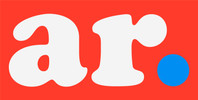14th Oct 2025
Disc Golf Flight Numbers Guide: How to Read Speed, Glide, Turn & Fade
If you’ve ever picked up a new disc and wondered what those four little numbers mean — you’re not alone. Every disc golf disc comes with a flight rating system (Speed, Glide, Turn, and Fade) that helps players predict how a disc will fly. Understanding these flight numbers is key to choosing the right disc for your arm speed, shot shape, and playing conditions. In this guide, we’ll break down what each flight number means, how they work together, and how to use them to improve your game.
What Are Disc Golf Flight Numbers?
Flight numbers are a standardized way of describing a disc’s expected flight pattern.
They’re typically displayed in this order:
Speed | Glide | Turn | Fade
Example:
Discraft Heat — 9 | 6 | -3 | 1
This means it’s a fast disc with great glide, high turn (flippy), and minimal fade at the end.
1. Speed
- Represents: How fast the disc needs to be thrown to fly as intended.
- Range: 1–14
- Low Speed (1–7): Easier to control, great for beginners (putters & midranges).
- High Speed (10–14): Requires more arm power, ideal for experienced players.
Pro Tip: If your driver isn’t flying far or keeps fading early, try a lower-speed disc. You’ll likely throw it farther and straighter.
2. Glide
- Represents: How long the disc stays in the air.
- Range: 1–7
- Higher Glide (5–7): More airtime, longer distance — great for newer players.
- Lower Glide (1–3): More controlled and predictable — ideal in windy conditions.
Example: The Innova Leopard (6 | 5 | -2 | 1) glides longer than a faster, heavier driver — perfect for slower arm speeds.
3. Turn
- Represents: How much the disc curves to the right (for right-hand backhand throws) during the high-speed portion of flight.
- Range: +1 to -5
- Negative Turn (-3 to -5): Understable discs that turn right easily.
- Positive Turn (0 to +1): Overstable discs that resist turning.
Pro Tip: Beginners should start with understable discs (more turn). They require less power and will fly straighter at slower speeds.
4. Fade
- Represents: How sharply the disc finishes left (for RHBH) at the end of its flight.
- Range: 0–5
- Low Fade (0–2): Straighter finish, easier to control.
- High Fade (3–5): Strong left hook at the end, great for spike hyzers or windy days.
Example: The Innova Firebird (9 | 3 | 0 | 4) has a heavy fade — a reliable choice for forehands and headwinds.
How the Numbers Work Together
Each number influences the others.
For example:
- A Speed 9 / Turn -3 disc (like the Discraft Heat) will flip more easily and stay in the air longer.
- A Speed 12 / Fade 4 disc (like the Innova Destroyer) will fight the wind and finish hard left.
Understanding the balance between Turn and Fade helps you shape shots like turnovers, hyzers, and flex lines.
Choosing the Right Flight Numbers for You
|
Skill Level |
Recommended Speed |
Ideal Turn/Fade |
Example Discs |
|
Beginner |
6–9 |
Turn -2 to -4 / Fade 1–2 |
Discraft Heat, Innova Leopard, Latitude 64 Diamond |
|
Intermediate |
8–11 |
Turn -1 to -2 / Fade 2–3 |
MVP Relay, DD Escape, Innova Valkyrie |
|
Advanced |
10–14 |
Turn 0 / Fade 3–5 |
Innova Destroyer, Discraft Zeus, MVP Photon |
Related Collections to Explore
- Best Beginner Disc Golf Drivers
- Midrange Discs Collection
- Overstable Discs Collection
- Understable Discs Collection
Final Thoughts
Once you understand disc golf flight numbers, picking the right disc becomes simple.
Think of Speed and Glide as your distance factors, and Turn and Fade as your control factors.
Whether you’re choosing your first disc or fine-tuning your bag, reading flight numbers gives you the edge to play smarter — not just harder.

